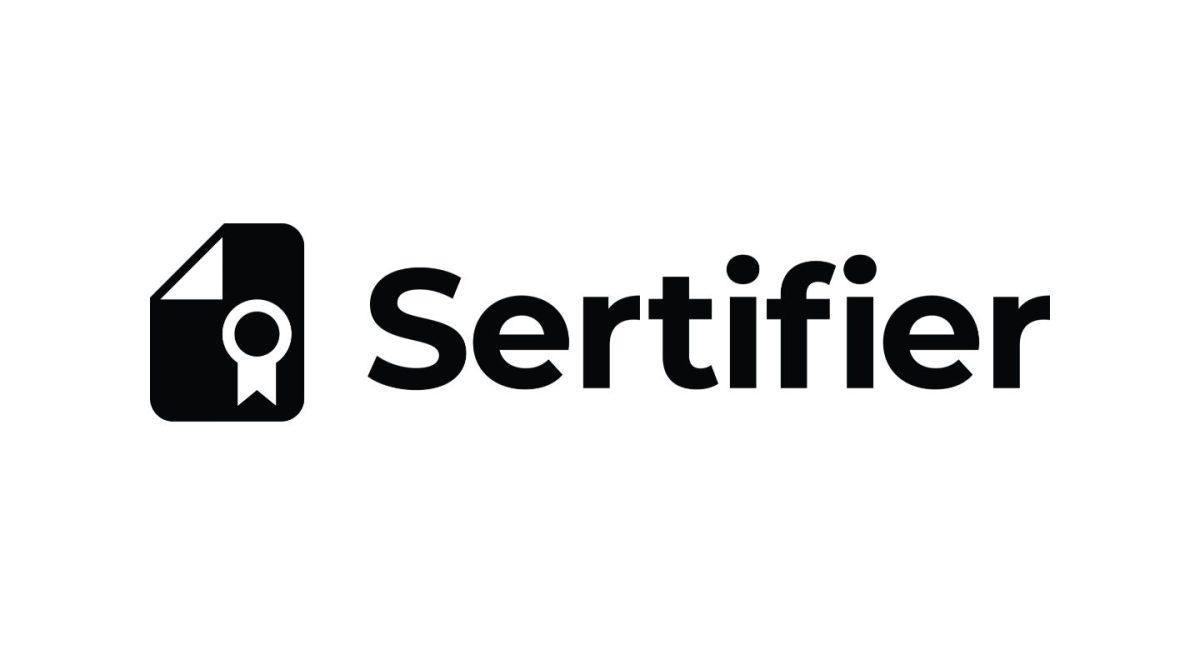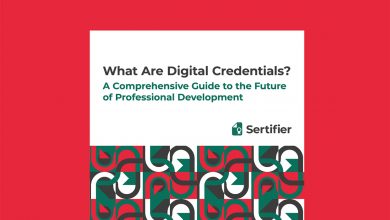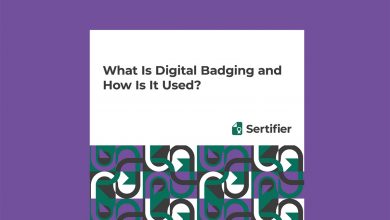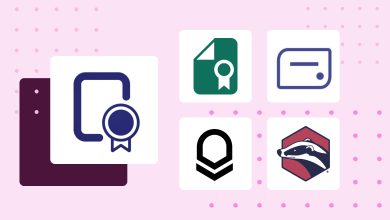How to Use Digital Badges for Skill Recognition
Table of Contents
Align Badges with Learning Outcomes

Using digital badges for recognition of skills and achievements is a no-brainer. These outcomes, structured to be SMART—specific, measurable, achievable, relevant, and time-bound—serve as the foundation for each badge, ensuring they represent real value and credibility. When we mix these learning outcomes with badges and demonstrate them to our professional network, we embed a layer of validity that stakeholders across educational and professional landscapes trust.
Creating learning outcomes that not only outline the expected knowledge or skills but also how these achievements can significantly impact the learner’s journey is the main benefit of these digital badges. Each digital certificate and badge represents a different skill, which can impact positively in any kind of professional environment. Through this alignment, digital badges became critical tools for recognizing and validating learning in a tangible, meaningful way.
We will be discussing our next topic now, defining badge criteria and evidence, this foundational step ensures that the badges we create and distribute are not just symbols, but genuine marks of achievement.
Define Badge Criteria and Evidence

Once the badges are aligned with our learning outcomes, the next step is to establish clear criteria and evidence for earning them. It’s important to know what we want to learn before everything, so we have a clear picture and a roadmap. This clarity ensures that badges accurately represent skills and knowledge, setting transparent, consistent standards for achievement. Additionally, specifying the type of evidence required—be it a product, performance, or reflection—adds a layer of authenticity and verifiability to the badge.
Defining these elements transparently communicates to learners exactly what is expected of them, facilitating a more focused and engaged learning experience. It also ensures that each badge serves as a reliable indicator of achievement, valued by educators, employers, and peers alike. Carefully defining these will make sure that the integrity of these badges is evident and that the skills and knowledge possessed are showcased clearly.
Use a badge system and platform

Using the right badge system with a compatible platform is essential. You have to make sure that the badges you possess are displayed correctly, and that the badge system outlines the purpose, and structure efficiently. They should also be organized into categories, levels, or pathways that reflect the learning goals. This organization aids in communicating the value and significance of badges to learners and stakeholders.
Also, it’s important to choose a badge platform that supports Open Badges standards. This will ensure interoperability and portability across different systems, making it easier for badges to be recognized and shared. A robust platform allows for the creation, issuance, management, and showcasing of badges, streamlining the process for issuers and providing a seamless experience for earners.
Therefore, Implementing a comprehensive badge system and platform both enhances the learning journey by clearly outlining progress and boosts the visibility and credibility of the badges. This infrastructure supports the badges’ integrity and ensures they are recognized as meaningful symbols of accomplishment in various contexts.
Engage and Support Learners

While it’s important to earn badges, engaging is crucial for their investment and motivation in the learning process. Involvement in the badge design process, feedback on badge criteria, and some level of autonomy in earning badges can significantly enhance learner engagement. While these creative activities increase engagement, they also help in increasing motivation. Providing clear, timely information about the criteria, evidence required, and the benefits of earning badges fosters a supportive environment.
Moreover, offering guidance and support through mentoring, coaching, or peer learning facilitates a deeper connection to the learning material and the badge-earning process. This approach not only motivates learners but also builds a community of practice, encouraging lifelong learning and continuous improvement.
By constantly supporting people through their digital badge journey, digital badges become more than just rewards; they represent meaningful milestones in personal and professional development. When you earn them, you feel motivated and find a reason to continue earning them! This comprehensive support system ensures that digital badges serve as effective tools for skill recognition and learner engagement.
Integrating digital badges with Existing Systems

For digital badges to truly impact skill recognition and learner motivation, they need to be seamlessly integrated into existing educational or professional systems. This integration involves linking badge platforms with learning management systems (LMS), professional development programs, or organizational websites. By doing so, badges become a natural part of the learning ecosystem, accessible and meaningful within the context of existing structures.
The integration enables automatic badge issuance based on specific achievements or milestones within the LMS, encourages continuous learning through visible pathways and progression, and enhances the user experience by centralizing learning resources and recognitions. For organizations, this means digital badges can directly tie into performance goals and professional development, making them a potent tool for employee engagement and skills verification.
The key to successful integration lies in interoperability—the ability of different systems to work together. By adhering to recognized standards like Open Badges, organizations can ensure that their digital badges are widely recognized and valued, both within and outside their immediate ecosystem. This strategic integration amplifies the value of digital badges, making them a versatile and impactful tool in the landscape of education and professional development
Best Practices for Designing Digital Badges

Practices for designing badges involve more than just making them look good. There are factors to consider, and you should generally use a strategic approach to make sure that the badge you create has a specific meaning behind it. Here are some best practices:
- Clarity and Relevance: Ensure that each badge represents the skill or achievement it stands for. Use symbols or colors that relate to the specific field or skill area.
- Consistency: Maintain a consistent style across all badges to ensure easy recognition and to reinforce the branding of the issuing organization or platform.
- Scalability: Design badges with various display sizes in mind, from small icons on a digital resume to larger images on social media or printed certificates.
- Badge Metadata: Include essential information within the badge metadata, such as the criteria for earning the badge, the issuing organization, and the date of issuance. This information validates the badge and supports its credibility.
- Engage Stakeholders in Design: Involve learners, educators, and industry professionals in the badge design process to ensure that badges are valued by all stakeholders.
Following these steps will make sure that you’re designing your digital badges correctly, and if you’re looking for great software to do so, sertifier’s Designer is used by industry leaders and we recommend you try it!
Monitoring and Reporting

Effective monitoring and reporting are critical for a certification and badging program. They provide insights into the program’s impact, learner engagement, and areas for improvement. Here are key aspects to consider:
- Tracking Badge Issuance and Achievement: Keep detailed records of which badges are being issued, who is earning them, and at what rate. This data helps in understanding the popularity and perceived value of different badges.
- Learner Progress and Engagement: Monitor how learners interact with the badge system, including which badges motivate them the most and how badges influence their learning paths. This can inform future badge design and learning content.
- Feedback Mechanisms: Implement tools for gathering feedback from badge earners and stakeholders. Their insights can highlight strengths and areas for enhancement in the badge program.
- Analytics and Reporting Tools: Utilize analytics tools to generate reports on badge distribution, engagement rates, and the impact on learning outcomes or professional development. These reports are valuable for continuous improvement and demonstrating the value of the badge program to stakeholders.
Regular monitoring and adaptive reporting ensure that digital badges remain relevant, valued, and aligned with learning goals and professional standards. This ongoing evaluation supports the sustainability and growth of the digital badge ecosystem.
Share and Celebrate Badgers

Celebrating badge achievements is crucial for enhancing visibility and emphasizing lifelong learning. Encouraging badge earners to showcase their badges on social media, e-portfolios, and resumes highlights their skills and achievements. Organizations can boost this visibility by featuring success stories, acknowledging earners in communications, or hosting events.
Linking badges to performance reviews or rewards further validates these achievements, aligning them with organizational goals and fostering a culture of continuous improvement. This celebration not only recognizes the earners’ efforts but also promotes a community focused on growth and professional development.
Conclusion
Celebrating badge achievements is crucial for enhancing visibility and emphasizing lifelong learning. Encouraging badge earners to showcase their badges on social media, e-portfolios, and resumes highlights their skills and achievements. Organizations can boost this visibility by featuring success stories, acknowledging earners in communications, or hosting events.
Linking badges to performance reviews or rewards further validates these achievements, aligning them with organizational goals and fostering a culture of continuous improvement. This celebration not only recognizes the earners’ efforts but also promotes a community focused on growth and professional development.



